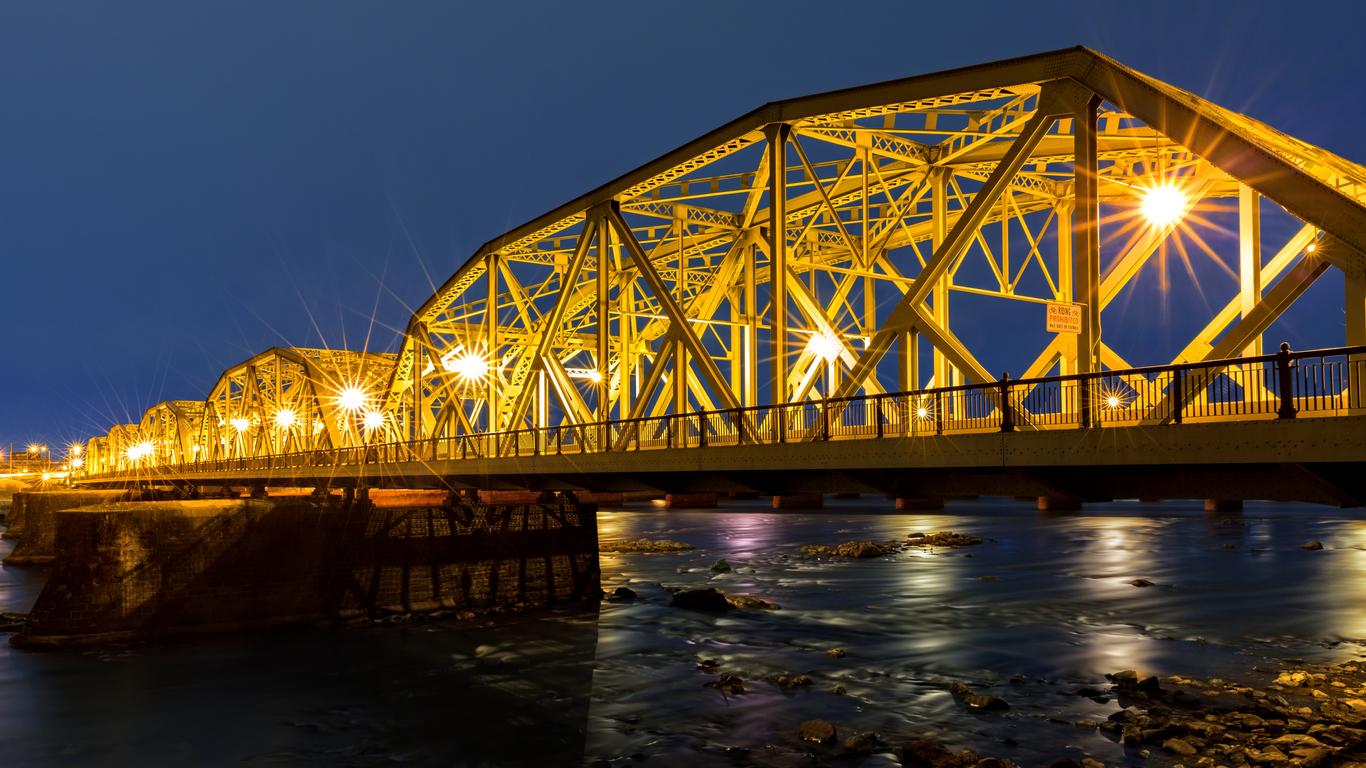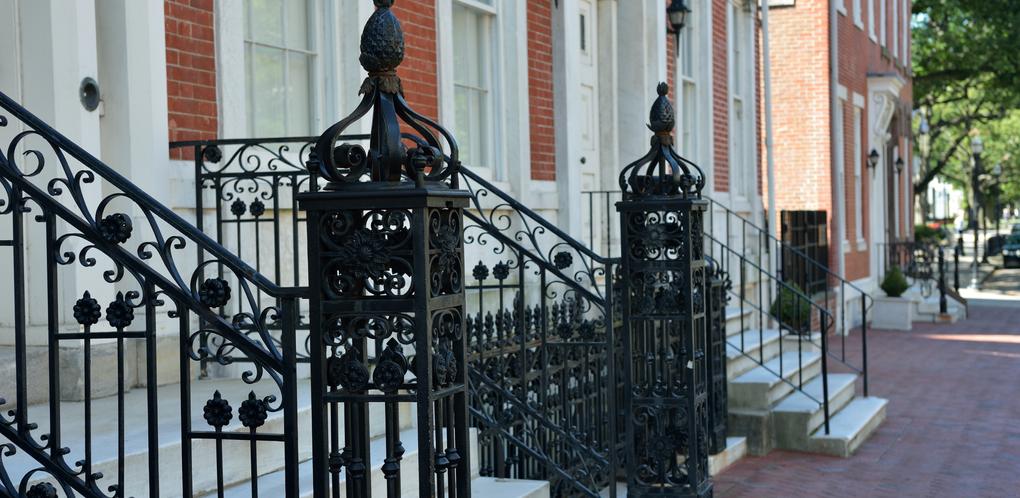1. At Home In The 1800S
Built as a country estate by its namesake in 1719, the William Trent House, a striking brick building set on 300 acres of property, is surrounded by English cherry trees. During the American Revolution, the home was occupied by Hessian troops who fought in Trenton in 1776. Eventually, the house became a supply depository for the American army. It is also the last eighteenth-century residence known for having slaves. Established as a museum in 1939, the recently renovated home, which showcases artifacts, furniture and paintings from the early 18th century, now provides tours related to Colonial life.
2. 200 Hundred Years Of History
Located in downtown Trenton, the New Jersey State House, which was designed by architect Jonathan Doane and completed in 1792, features a dome covered in 48,000 pieces of gold leaf. Though a fire destroyed much of the original building in 1885, the Governor's Office, Senate and Assembly halls and the courts, as well as most documents, remained intact. The state house showcases a number of works of art, including sixteen murals created by William Brantley Van Ingen, which depict scenes from the Revolutionary War battles of Trenton, Princeton, and Monmouth, as well as the construction, agriculture, glassware and ceramics industries.
3. Giants Among Us
A 42-acre landscaped park, the Grounds for Sculpture, founded in 1992 by John Seward Johnson II, features outdoor large-scale sculpture gardens and indoor exhibition areas that showcase the works of Seward Johnson and artists such as Clement Meadmore, Anthony Caro, Magdalena Abakanowicz, Boaz Vaadia, and George Segal. There is a permanent collection of 270 contemporary sculptures, including representations of Marilyn Monroe, the Venus de Milo and Van Gogh portraits. The park is overrun with spectacular peacocks that stroll amongst the guests.
4. Revisit The Revolution
Housed in the last remaining colonial barracks in New Jersey, the Old Barracks Museum originally sheltered soldiers during the French and Indian War in 1758. In 1902, the Daughters of the Revolution bought a section of the building, and in 1914, the state established a museum on the site. The gallery displays a collection of colonial artifacts and weapons, and offers educational programs for visitors. The institution also hosts Colonial Balls, workshops, walking tours, and even a pub crawl, as well as reenactments of the Battle of Trenton.
5. Serenity In The City Center
The largest and oldest common in Trenton, Cadwalader Park features nearly 100 acres of green space. Designed in 1887 by Frederick Law Olmsted, who also designed Central Park in New York City, the green envelops the Trenton City Museum, a mansion at the center of the park. Visitors are welcome to stroll along the deer paddock, stream, lake and woodlands. The park also honors the fallen of the Civil War with the Soldiers' and Sailors' Monument, which was erected in 1903.


